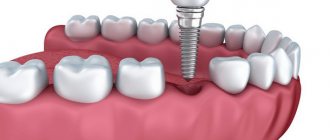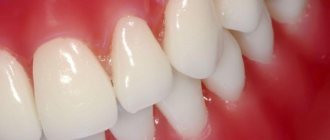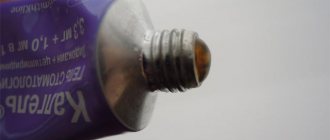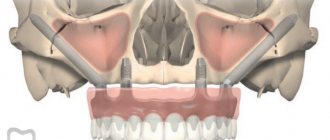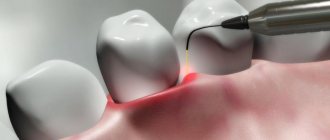Implants are only placed on absolutely healthy people.
There are many installation restrictions, they come in several types. The only type that completely excludes implantation is absolute contraindications, of which there are very few left at the present stage of development of implantology. These include:
- oncology;
- tuberculosis;
- diseases of the blood, hematopoietic organs;
- diseases of the central nervous system;
- AIDS/HIV;
- diabetes mellitus type I;
- connective tissue diseases;
- diseases of the oral mucosa (lupus erythematosus, Sjogren's syndrome and others);
- hypertonicity of the masticatory muscles, bruxism.
The remaining contraindications are temporary, that is, depending on the specific clinical picture, they can be adjusted. As a result, against the background of a compensated state, successful installation of implants becomes possible. Be careful with:
- hypertension;
- diabetes mellitus;
- abuse of alcohol, nicotine (however, adequate maintenance therapy reduces the level of their negative impact).
Potential Hazards
There is an opinion among some people that implantation is associated with negative consequences. In some situations this statement is quite legitimate. foreign body invasion surgery .
Therefore, any change in the general condition of the body, unqualified dentist and other factors can affect the result. provoke inflammation and disruption of osseointegration , causing rejection of the established root.
The main danger from implants lies in the incorrect choice of implantation technique and preparation of bone tissue , medications, shape and size of the artificial root. An implant placed in a bone of inappropriate width will cause it to fracture.
During surgery, the facial nerve may be affected . Incorrect implantation angle will result in misaligned crowns. At the moment, the listed consequences are observed only in isolated cases and with a highly qualified dentist they can be excluded.
Most often, future patients are concerned about issues related to the pain of the procedure, healing of the wound surface and possible damage to the jaw:
Implants are very painful to place
Modern methods of pain relief make implantation completely painless . To block pain, conduction anesthesia is performed by injecting the drug along the location of the nerve canals.
In fact, the procedure is not much different from a complex tooth extraction. Painful sensations accompany a person only after a traumatic implantation . As a rule, the pain decreases in intensity within 3 days.
Is general anesthesia necessary?
Modern methods of pain relief involve the use of drugs that have minimal effects on the body and do not cause harm to it . Local anesthesia is considered the best option.
Most often Ultracaine . It is perfect for people with heart and vascular diseases and can be used even during pregnancy.
If there is a contraindication for local anesthesia or at the request of the patient, general anesthesia can be given . The drug for this is selected depending on the implantation method and the general condition of the body.
Damage to the jaw due to deep screwing of the structure
Even though the metal rod has a limited length and width, damage to the jaw during implantation is still possible . Such situations were observed due to the doctor’s unprofessionalism and negligent attitude towards the operation.
Basically, these are the following damages:
- violation of the integrity of the walls of the maxillary sinus ;
- damage to the nerve of the lower jaw ;
- exit of an artificial root into the nasal or oral .
Of all the listed injuries, the first option was most often observed. But the possibility of such errors is currently minimized, since digital data obtained during the survey is increasingly used for installation.
Seam divergence
Dehiscence of sutures is a very common occurrence , which can be the result of both a medical error and non-compliance with recommendations by the patient. The main reasons for the discrepancy are smoking and careless mechanical impact on the operated area.
If the seams have come apart in a place that is not visible during conversation, then dentists recommend not to disturb the sutured surface. Most often, the wound heals on its own.
If the stitches come apart in the smile area, they need to be reapplied. In isolated cases, when the neck of the implant is exposed, it is removed.
Long-term non-healing of the wound
A long wound healing process is quite rare. As a rule, a preliminary detailed examination eliminates all risks for such a manifestation.
With a changed general condition, decreased immunity and the addition of infectious diseases, poor healing is still possible .
Classical dental implantation: stages of titanium root installation.
This note shows the average cost of an overdenture.
Here https://zubovv.ru/lechenie/zubyi/podrobnaya-shema-stroeniya-cheloveka.html everything about the structure of the upper teeth of a person.
With timely relief of symptoms, the prognosis will be positive.
If wound healing does not occur for a long time and no measures are taken, then the development of re-implantitis and rejection of the metal root is possible.
Severe swelling after surgery
In the first days after surgery, slight swelling of the operated tissues may appear. As a rule, with a positive course of the process, the swelling subsides within 2–4 days . If swelling lasts longer and is accompanied by pain, then the onset of inflammation can be assumed.
Prolonged bleeding
The postoperative period involves the presence of a small amount of bloody discharge. Prolonged bleeding is usually provoked by the patient. Most often, the cause is the use of certain medications, high blood pressure and injury .
Possibility of rejection
If medical errors are excluded, installation technology and dentist’s recommendations are strictly followed, the survival rate of the latest generation of implants approaches 100%. Currently, statistics show that this figure is 97%.
Peri-implantitis
Allergy to titanium: myth or reality?
Numerous studies have proven that titanium is a material that fuses with bone tissue as quickly as possible and practically does not cause allergies .
Of 100% of patients, only 3% had an allergic reaction to titanium.
Implantation is not possible if the bone has atrophied
Insufficient bone tissue becomes an absolute contraindication in very rare cases . You can install an implant by first increasing the bone volume. This is necessary to prepare the place where the rods will be fixed. There are many ways to solve the problem of atrophy. Some implantation techniques even involve simultaneous installation of an implant with extension.
Bone grafting in the upper jaw is called a sinus lift. It is aimed at shifting the bottom of the nasal sinus upward, replanting osteoplastic material to create the required bone thickness.
Installing implants is a painful procedure
The myth about the pain of implantation arose from the opinion that drilling into the bone leads to damage to nerve endings that, in reality, are not there. During the operation, the patient may experience minor discomfort. At the postoperative stage, there is discomfort in the suture area. In general, implantation is no more painful than treatment of caries or tooth extraction through the use of anesthetics. In difficult cases, when installing 6 or more rods, general anesthesia can be used. Strong feelings of fear and anxiety before surgery are eliminated with sedatives.
Once the freezing effect wears off, there is often no need to take additional painkillers. Minor discomfort occurs due to damage to the tissue of the mucous membrane, but it lasts no more than 2-5 days.
Features of Zygoma implants
The length of zygomatic implants is up to 60 mm (Zygoma models from Nobel range from 30 to 52.5 mm). This allows you to use the zygomatic bone, which is not subject to thinning and inflammatory processes. As a result, the patient does not need to undergo a sinus lift, which avoids complex surgery, long-term rehabilitation and significantly reduces the final cost of treatment.
Modern Zygoma models are presented in two versions: with a straight and angular platform, i.e. beveled top edge. In the first case, angular multiunit abutments are used, in the second - straight ones. Implants with a beveled edge are specially adapted for inclined installation - in such situations, their edge will be flush with the gum, which does not require the use of angled abutments and somewhat facilitates the process of fixing the prosthesis.
In addition, implants can be two-piece or one-piece. The former require the installation of an abutment, the latter do not, because... it is immediately combined with the intraosseous part - one-piece zygomatic implants are presented in the Biomed brand line.
A special feature of Zygom models from Nobel is that they have a patented porous and active TiUnit coating with microgrooves. It ensures rapid implant healing due to the growth of bone cells inside the pores, which form a three-dimensional mesh surface. As a result, the implants are securely connected to the jawbone and practically become one with it.
On the contrary, Biomed zygomatic implants have a smooth surface. There is also an antimicrobial coating. All this significantly reduces the risk of developing peri-implantitis, and also allows you to install implants against the background of an inflammatory process - with periodontitis or periodontal disease.
Is there an absolutely bloodless operation?
The concept of a “completely bloodless” implant installation is somewhat exaggerated. The transgingival method involves installing an implant without cutting the gums or applying sutures. This operation is less traumatic than the classic one. Helps reduce the severity of postoperative complications and shorten the rehabilitation period. It is performed through a puncture of the gum.
The technique is indicated for one-stage implantation, during which the implant with a crown is installed in a maximum of 5-7 days.
Minimally invasive implantation is indicated:
- if it is necessary to quickly restore the frontal units;
- with a narrow alveolar ridge;
- with complete edentia against the background of slight bone atrophy.
The accuracy of installation of structures is ensured by the preliminary production of surgical templates. This reduces the risk of damage to blood vessels, nerves, and neighboring units. The anatomy of the alveolar bone is also taken into account.
Pros, cons and contraindications of laser implantation
As we have determined, the main difference between laser and classical implantation is the method of cutting soft tissues. The declared advantages of a dental laser are based on this feature.
Advantages
Hemostatic effect.
A dental laser burns tissue, forming a kind of film and adhesions of capillaries in the affected area. This reduces blood loss and makes the dentist's job easier.
Bactericidal effect.
The high temperature of the laser beam destroys pathogenic microflora in the incision area. This ensures the sterility of the wound and reduces the likelihood of bacterial complications.
Aesthetic effect.
The laser facilitates alignment of the gum edge in the area where the crown meets the mucous membrane. This allows you to create a natural contour of the gums, which is important when replacing the front teeth of the upper and lower jaw.
Psychological effect.
Patients choose laser implantation in hopes of reducing pain during surgery and shortening the postoperative period. And a positive attitude is known to promote rapid recovery after surgery.
Flaws
High price.
The cost of dental services using a laser increases the cost of implantation by at least a third.
Unpleasant smell.
During laser implantation, the smell of burnt meat is felt, which for some patients is worse than any manipulation with a metal scalpel.
Contraindications
There is a standard list of absolute and relative contraindications to any type of implantation, including laser.
Direct laser radiation is contraindicated in the presence of precancerous changes and neoplasms in the area of the operated dentition defect.
Patients with such problems are first referred for consultation to an oncologist.
Does dental implantation really take a long time?
The result of implantation depends on correct diagnosis
Implantation of one implant takes no more than 30-40 minutes . The preparatory stage is longer. The following activities are carried out:
- blood test for total protein, bilirubin, etc.;
- diagnosis of contraindicated diseases;
- sanitation of the oral cavity;
- treatment of periodontal disease, periodontitis, caries;
- orthopedic preparation for existing prostheses and other structures that need replacement.
A detailed treatment plan is drawn up, and consultations with other specialists are scheduled. The patient is given recommendations on diet. If necessary, bone grafting is performed. Implant treatment using the express method lasts about 7 days. The classic protocol is on average 4-6 months. Osseointegration takes longer in the upper jaw compared to the lower jaw.
Cost of implant installation
Egor
I’m writing, maybe the information will be useful to someone. My teeth fell out early and I didn’t want to walk with a denture. But I always thought that I couldn’t afford the cost of implanting ALL teeth. I was smart enough to go to a consultation, and there they explained to me, a complete idiot, that if all my teeth are missing, then I don’t need to get 32 implants. Enough 4 at the top and 4 at the bottom. And prostheses are firmly attached to them. It is much cheaper and quite adequate in cost. This design for one jaw can be ordered from 120 thousand.
Alina
My employee installed an implant in a “budget” clinic for 25 thousand, when I was puzzled by finding a good deal, I found it for 18. They did everything perfectly, the service not only pleased, but really delighted. Once again I was convinced that everyone’s budget is different!
PROMOTION
Osstem dental implantation turnkey
18,000 rub.
Is there a high risk of implant failure?
Even at the dawn of dental implantology (50-60 years ago), the majority of dental systems took root well. Over decades of their use, significant experience has been accumulated in production and installation technology. Complications in the form of peri-implantitis are rare, since the rods are made of bioinert materials (titanium and its alloys, zirconium). Products are characterized by:
- strength;
- resistance to mechanical loads;
- anti-corrosion properties;
- hypoallergenic.
A slight risk of developing rejection is possible due to the lack of professionalism of the doctor , so you need to take your choice of clinic and implantologist seriously. Failure to follow medical recommendations and the development of other diseases years after implantation can also lead to peri-implantitis
Advantages and disadvantages of dental implants Antozhir
The advantages of the system include:
- Can be installed using both the classic two-stage method and the instantaneous load method;
- titanium roots are suitable as a support for any type of prosthesis;
- ease of installation;
- moderate traumatic operation;
- Some models can be installed immediately after tooth extraction;
- possibility of implantation in case of bone atrophy;
- rapid osseointegration due to surface porosity;
- The implant can prevent bone thinning.
The disadvantage of the systems is that a microgap is formed at the junction with the abutment, which leads to increased load on the screw. This may cause the abutment to unwind or become deformed.
Implantation is an expensive procedure, is it true?
Dental implantology is developing rapidly. Increased competition among manufacturers and clinics has a positive effect on costs. The choice of dental systems is aimed at the mass consumer. The cost of installing one implant is equivalent to making bridges from metal ceramics or zirconium.
Implants are a long-term investment in your own health
The main feature contributing to the rapid growth in popularity of implantation is its service life. On average, a dental implant lasts 15 years or more, but bridges can be used for about 7 years (after 5-7 years, the patient with a bridge will have to pay for it again).
How to walk with front tooth implantation?
If we talk about installing a crown on an implant in one visit, then it is possible, but not in all cases. If there are contraindications, so that the patient does not go without a tooth, we install an immediate prosthesis instead of a crown, which is fixed on the teeth adjacent to the “missing” and does not damage the soft tissues. Perhaps this type of prosthesis is not a masterpiece of aesthetics, but it does its job well - it replenishes the dentition, and it looks good. In addition, the patient will not have to wear it for a long time - a maximum of four months, after which the prosthesis will be replaced with a permanent crown.
Does the reliability of structures really depend on their price?
According to the price segment, there are designs of three classes: premium, medium, economy. Premium implants have the highest price. They are made from high-quality materials - pure titanium and zirconium. Cheaper models are made from titanium alloys. Premium systems offer a wider range of application possibilities in different clinical cases - they are easier to install and have a wide selection of orthopedic elements. Therefore, their reliability compared to economical models is significantly higher.
Caring for implanted teeth is difficult
Implants do not require special care, but crowns and dentures must be thoroughly cleaned. It is recommended to use additional cleaning products:
- irrigators;
- floss;
- rinse aids.
They allow you to fight plaque in hard-to-reach places, especially in the area where the crown comes into contact with the gum. When caring for a conditionally removable denture, it is recommended to use dental brushes.
Caring for artificial teeth is not difficult, the main thing is that hygiene procedures are carried out correctly and regularly
Product catalog of manufactured implants
Axiom implant system models
The ruler is represented by three conical rods:
- Axiom REG . For classical implantation. Artificial roots of different lengths and diameters allow solving edentulous issues in all areas of the jaw.
- Axiom PX . Used for implantation with immediate load, installed in bone of low density.
- Axiom 2.8. The diameter of the implant is only 2.8 mm. Indicated for reconstruction of anterior teeth where space is limited.
Types of dental implants of the Anthofit system
Implants are distinguished by their versatility and multifunctionality. They are used for single prosthetics with crowns, using cementation, screwing or fastening to a beam structure. Indicated for implantation immediately after tooth extraction. They do not lose stability during inflammation of periodontal tissues.
Models:
- BCP . It has a locking mechanism that is completely immersed in the gum tissue. Used for reconstruction of anterior teeth.
- OI tapered . Stable, conical structure that follows the anatomical structure of the natural root. Has an octagonal retainer with a depth of 1.5 mm.
- OI straight . Cylindrical implant with hexagonal lock.
- HE straight . It has similar properties to OI straight; it is a cylindrical rod with a hexagon, the height of which does not exceed 0.5 mm.
Ossfit dental implants for dental prosthetics
They are used to restore distant roots, since the design provides for a gap between the gum and the crown, which can affect the aesthetics. They do not require extensive surgical intervention; they are installed using a one-stage method through a small puncture in the gum.

